Astronomers' Christmas present: the JWST
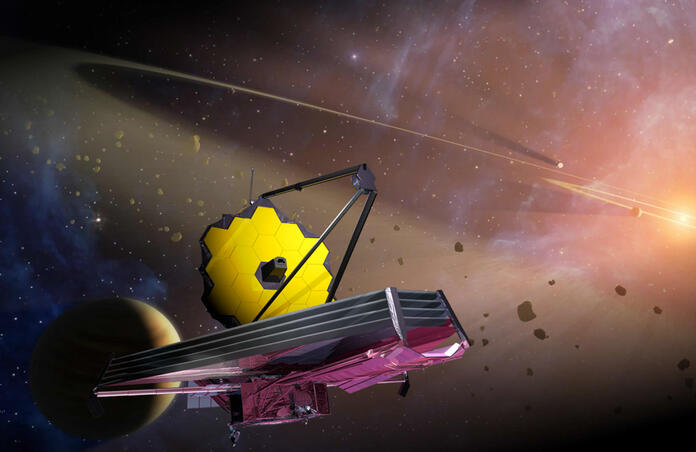
After numerous delays to the launch of the James Webb Space Telescope (JWST), this historical date has been confirmed: 25th December 2021.
Let’s start with what we all care about: when and where can I watch the launch ? On the NASA Live TV website, you can follow the whole process from pre-launch (3am EST/8am GMT) to post-launch briefings (9am EST/2pm GMT). If you’re too busy with Christmas, the one moment you really don’t want to miss is scheduled for 7.20am EST, or 12.20 GMT. This is when the Ariane 5 rocket carrying the JWST will take off from ESA’s spaceport in Kourou, French Guiana. This launch vehicle was chosen for its reliability, having successfully launched over a hundred spacecraft over the past three decades, of which 76 in a row.
JWST in Ariane 5 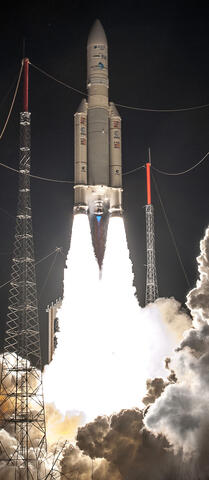
An Ariane 5 launching
The help of ESA goes to show how international the effort to launch this unique space telescope has been: “258 distinct companies, agencies, and universities” (see the full list) cooperating notably to design and build equipment for what has been announced as the most powerful space telescope ever. It will indeed be much larger than any of its predecessors, with the fully unfolded primary mirror having a 60-fold surface compared to the Spitzer Space Telescope’s. The reason for comparing it to Spitzer, rather than Hubble, is because the JWST’s main focus will be on infrared studies of the cosmos rather than on the visible and ultraviolet wavelengths that the HST works with.
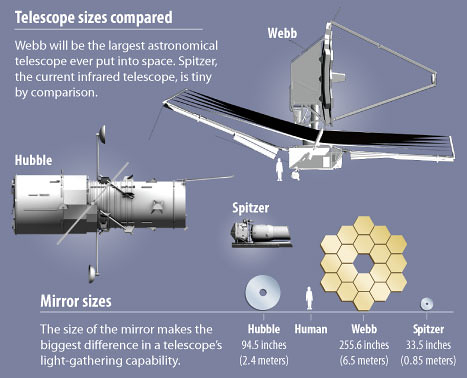
It will also be international collaborations that will analyse the results; from the Solar System and exoplanets to the most distant galaxies, the JWST’s instruments (Near-Infrared Camera – NIRCam, Near-Infrared Spectrograph – NIRSpec, Mid-Infrared Instrument – MIRI and Fine Guidance Sensor/ Near InfraRed Imager and Slitless Spectrograph – FGS/NIRISS) will reach unprecedented sensitivities to image an incredible array of targets.
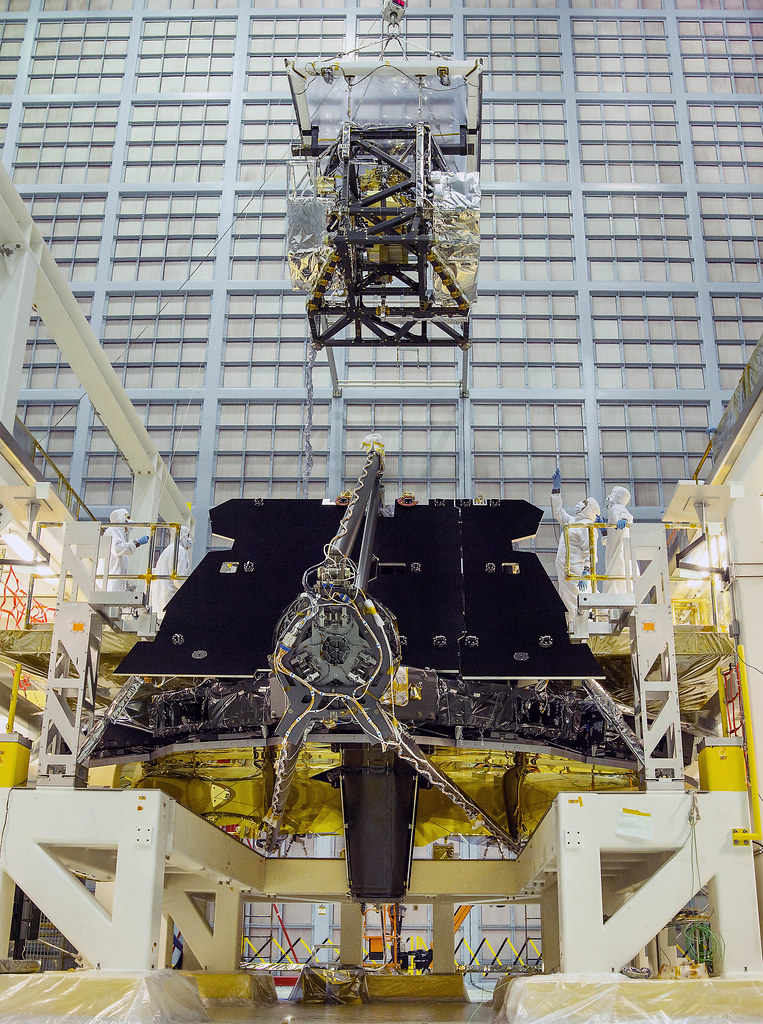
Unlike the HST and the Spitzer telescope that have been operational for the past 31 and 18 years, respectively, the JWST will be placed much further away from Earth at the second Lagrangian point, which to be stable will require regular propelling – hence the mission is limited to about 10 years by the fuel supply. It also removes the option of crewed servicing, and everything from the launch to the end of the commissioning and calibration period (first 6 months) will have to run smoothly. The deployment and alignment of the 18-segment mirror, in particular, is crucial if one wants to obtain sharp images, and to avoid a repeat of Hubble’s initial fiasco.
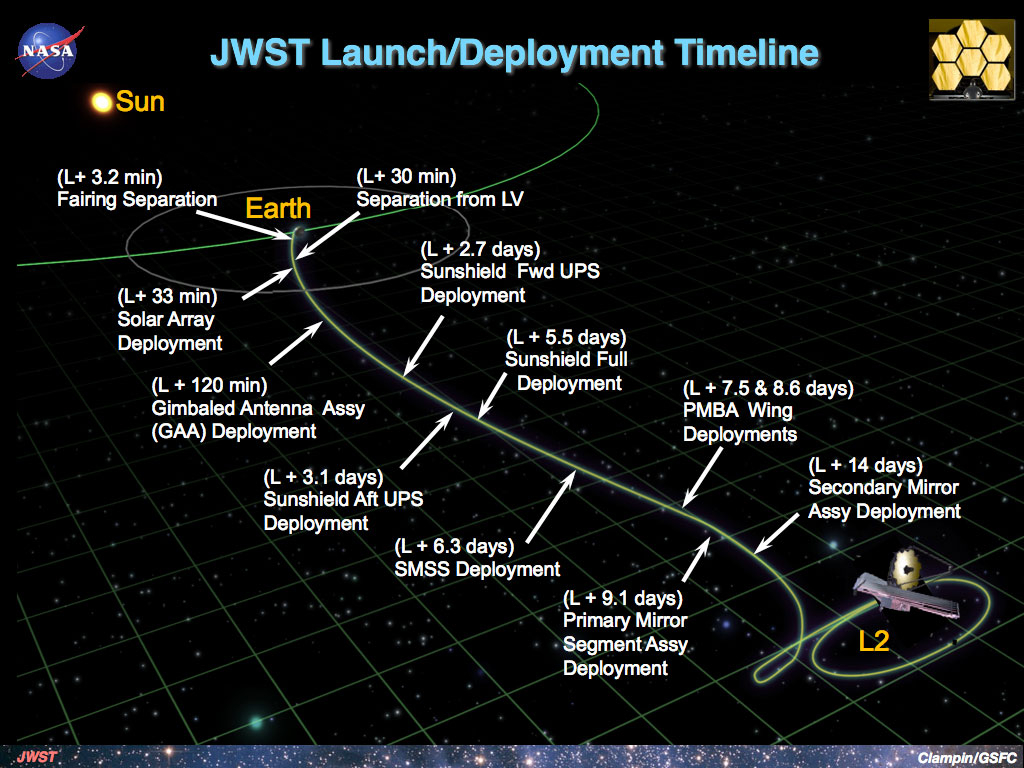
As mentioned in the introduction, the road to this launch has been very bumpy, not least because the date of the 25th December emerges from the 11th launch delay. On top of that, there have been controversies about the telescope being named after James Webb, who was the second appointed administrator of NASA in the 1960s, therefore being the man who oversaw the Apollo missions. Allegedly, Webb was involved in discrimination against LGBTQ employees. NASA stuck with their decision, as the agency would look very differently without Webb’s work, if it would even have prospered at all.
And unless the weather plays the Grinch again, it is the wonderful James Webb Space Telescope that will launch for its adventures at 7.20 EST on Saturday.
Cover Image: JWST illustration, NASA
Image Credits:
1 - JWST in Ariane 5, NASA/ESA
2 - Ariane 5 launching, arianespace.com
3 - JWST, HST, Spitzer size comparison, NASA
4 - Instruments, NASA/C. Gunn
5 - Deployment, NASA's Goddard Space Flight Center
6 - Timeline, NASA
